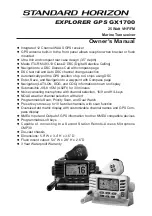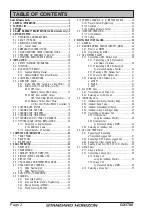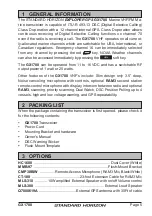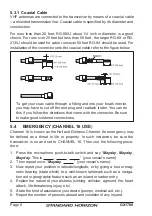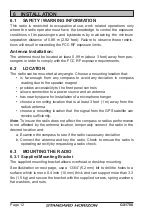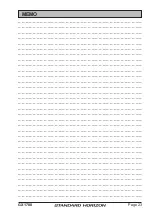
GX1700
Page 10
the
PTT
button on the mic. Then switch to the new channel. When the new
channel is not busy, call the other vessel.
After a transmission, say “
over
,” and release the microphone’s push-to-talk
(
PTT
) switch. When all communication with the other vessel is completed,
end the last transmission by stating your Call Sign and the word “
out
.” Note
that it is not necessary to state your Call Sign with each transmission, only at
the beginning and end of the contact.
Remember to return to Channel 16 when not using another channel. Some
radios automatically monitor Channel 16 even when set to other channels or
when scanning.
5.6 OPERATING ON CHANNELS 13 AND 67
Channel 13 is used at docks and bridges and by vessels maneuvering in
port. Messages on this channel must concern navigation only, such as meet-
ing and passing in restricted waters.
Channel 67 is used for navigational traffic between vessels.
By regulation, power is normally limited to 1 Watt on these channels. Your ra-
dio is programmed to automatically reduce power to this limit on these chan-
nels. However, in certain situations it may be necessary to temporarily use a
higher power. See page 25 (
key) for means to temporarily override the
low-power limit on these two channels.
5.7 AUTOMATED RADIO CHECK SERVICE
In areas across the country, Sea Tow offers boaters a way to conduct radio
checks. To use Sea Tow’s free Automated Radio Check service, simply tune
your VHF radio to the appropriate channel for your location and conduct a ra-
dio check as you typically would. Upon releasing your radio’s microphone, the
system will play an automated message and relay your transmission back to
you, thereby letting you know how your signal will sound to other boaters.

